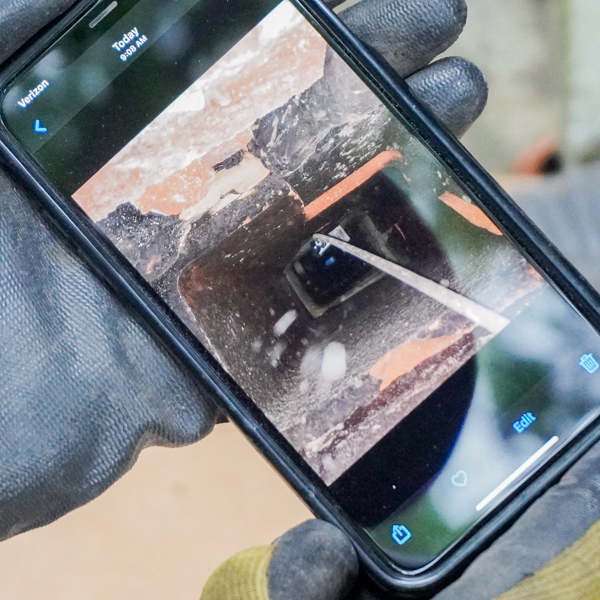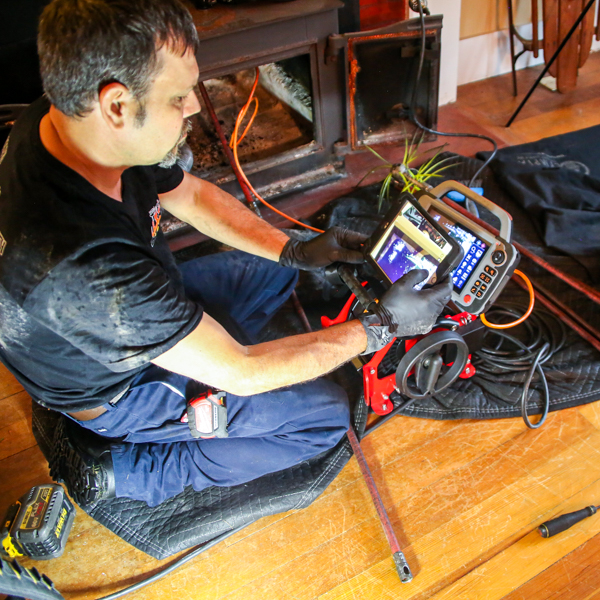Cracked Chimney Flues Present Dangers
Your chimney flue or chimney liner is the component inside the brick-and-mortar chimney structure that connects with your fireplace. Prior to the mid-1900s, chimneys were typically built with no kind of liner and were therefore relatively unsafe compared to today’s chimneys.
In the US, chimney liners are now mandatory with any new chimney construction. Whether or not a chimney is lined, damage that will lead to dangerous operating conditions can occur.
Here are some things you need to know.
Chimney liner damage

All chimney liners, regardless what material they’re made of (see below), can eventually become damaged. This usually means cracks or breaks in the liner’s surface.
The reason flue liners are required today is because fire-safety authorities, local governments and everybody else realize what can happen when intense heat, flames, sparks and corrosive substances come into contact with bricks and home building materials.
A cracked flue can lead to several serious problems:
- Heat and flames can quickly deteriorate the bricks and mortar of the chimney
- Acidic compounds such as built-up creosote also can harm the chimney structure
- Smoke and toxic gases, including deadly carbon monoxide, can escape from the flue and travel into the home harming your family and pets
- A fire can start with ignited creosote and then spread to other parts of the home
Flue liner materials
Most flue liners in modern homes are made from one of three materials:
- Clay tiles
- Stainless steel
- A poured-in-place compound
For chimney liner replacements, the majority of chimney sweeps and chimney contractors recommend stainless steel for its strength and durability.
Stainless steel liners are easier to work with than clay tiles or poured compounds because they are pre-built and sized for a variety of fireplace types and venting capacities. A stainless steel liner is inserted into the chimney without having to construct or configure the materials.
Chimney inspections: the only way to know the condition of your chimney liner
Because you can’t easily see down into your chimney flue, it’s impossible for you to know what condition it’s in at any given time. The only way to know what’s happening inside your chimney is with a chimney inspection.

Licensed chimney inspectors have a variety of strategies for determining the condition of a flue liner including video imaging. A specialized camera is lowered into the flue, allowing the technician to see cracks, splits, decay or other liner problems that need repairing.
It is recommended that you schedule annual chimney inspections for the flue as well as the chimney structure in general and all its components such as the chimney cap, chimney flashing and chimney crown.
With regular inspections, you’ll be able to learn about early signs of damage or malfunction and get them repaired quickly. Neglecting this work can lead to expensive repair projects and very dangerous operating conditions.
Based on what your inspector uncovers, some basic repair work may solve the problem with your flue liner. For more extensive damage, it may be advisable to have a new liner installed to give you years of safe, predictable performance.
Damaged flue liners are nothing to take lightly. If your liner is damaged or you think it may be, contact Fire N’ Stone of Tilton, NH. We provide licensed chimney flue inspections, flue relining and all types of chimney repair work. Speak with an expert today at (603) 293-4040.





